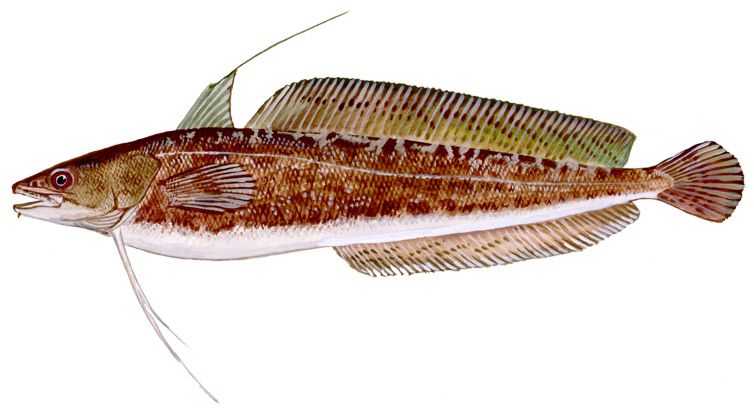Red Hake

Species Details
Urophycis Chuss
Phycidae
Gadiformes
Inshore, offshore
7 lbs.
30"
Red Hake (Urophycis chuss) Fish Description
The Red Hake, also known as the squirrel hake, and ling, have a propensity to be mottled red-brown to olive-brown on the upper sides of their body, alongside large, irregular pale tan patches and a gradient white underside.
One of the distinguishing characteristics of the Red Hake is barbel, or whisker, located on their chin, as they are considered a species in the hake family.
They have small heads, but large mouths with plenty of small teeth. And they have a triangular dorsal fin, and their second dorsal and anal fins are quite long but do not attach to the tail fin, similarly to an eel.
Diet and Size
Red Hakes’ diets primarily consist of small shrimps, crabs, fishes, and squids.
Red Hake can grow lengths up to around 30 in. and weighs around 7 lbs.
Interesting Facts about Red Hake
- Red Hakes are known to be quite sluggish creatures and that they would often create a depression on the seafloor to hide and rest themselves in.
- Their chin barbel, or whisker, contains taste buds that Red Hakes can then use to find bottom-dwelling food, such as shrimps or crabs.
Red Hake - Fishing Techniques
Red Hake is frequently caught accidentally by anglers when fishing for other game fish as their target. As Red Hakes aren’t enticing catches for they’re quite small fish, unless caught deep in water, and don’t put up a good fight once hooked on.
To angle for a Red Hake, you’ll find that they accept varied baits such as clams, sea worms, shrimp, and chunks of herring or mackerel. As Red Hake often feed nocturnally, fishing for them at night with chunks of herring would prove good results in areas with wrecks or heavy structures. An 8-16 oz. lead sinker would be enough to hold the bait down at the bottom.
Considering Red Hakes are proven to be sluggish, or slow in nature, a still-fishing bait approach would be a better idea as artificial lures aren’t considered as successful in catching them.
Habitat and Distribution
Red Hakes are commonly found on soft muddy areas or sandy bottoms, and never at rockier areas with gravel or shells. Juvenile red hakes usually are located at coasts with shallow depths, 4 to 6m, living in scallops, and try to remain as close to scallop beds until they grow into adults. And by adults, they tend to migrate deeper waters, going from about 110 to 130m, and occasionally over 550m.
Red Hakes are located at the Northwest Atlantic: North Carolina towards southern Nova Scotia, straying to the Gulf of St. Lawrence.







